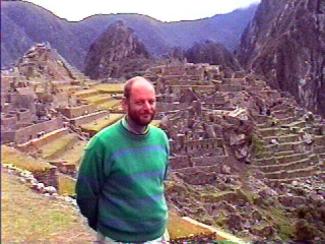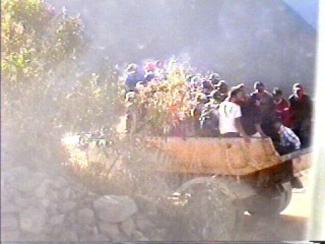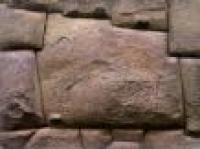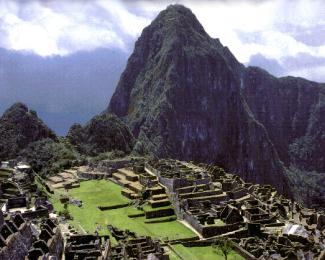Machu Picchu. The place where everyone goes, and for good reason. At it's peak, it was the furthest outpost of the Incan Empire, the place where the Incans, who were mountain people, traded with the jungle people. The empire had only existed for about 150 years before the Spaniards came and put an end to it. At that time, Cusco, the capital of the empire, became a Spanish city and Machu Picchu was abandoned.
 Machu Picchu hovers over a river valley below, while the peak Huayna Picchu hovers over it. It was connected to Cusco by the Incan Highway which winds past the peaks sticking to the highlands. Beyond Machu Picchu the transition to the jungle begins. As they say here, this is the "eyebrow" of the jungle.
Machu Picchu hovers over a river valley below, while the peak Huayna Picchu hovers over it. It was connected to Cusco by the Incan Highway which winds past the peaks sticking to the highlands. Beyond Machu Picchu the transition to the jungle begins. As they say here, this is the "eyebrow" of the jungle.
 At the left are pictures of Machu Picchu, its ruins exposed. It was a tight complex with the king's palace at the center, surrounded by noble's houses and schools for the young men and women. Surrounding the town, cascading don the hill, are the remains of the terraced gardens.
At the left are pictures of Machu Picchu, its ruins exposed. It was a tight complex with the king's palace at the center, surrounded by noble's houses and schools for the young men and women. Surrounding the town, cascading don the hill, are the remains of the terraced gardens.
![]() Here is a 180 degree view of the cloister of the dominican convent in Cusco. It was built on top of an Incan temple complex with separate temples to the Sun, the Moon, the Rainbow, and the Stars. All of this was hidden for a few centuries until an earthquake in the 1950's brought down most of the convent, exposing the old Incan walls. The priory has since been rebuilt as a museum, with the restored Incan walls below and the Dominicans living above. It is not as if you are living in a museum, you are actually living in a museum here.
Here is a 180 degree view of the cloister of the dominican convent in Cusco. It was built on top of an Incan temple complex with separate temples to the Sun, the Moon, the Rainbow, and the Stars. All of this was hidden for a few centuries until an earthquake in the 1950's brought down most of the convent, exposing the old Incan walls. The priory has since been rebuilt as a museum, with the restored Incan walls below and the Dominicans living above. It is not as if you are living in a museum, you are actually living in a museum here.
 The photo shows shows the way the rocks were carved for the walls. I can't explain just how impressive this really is, but I will say that they are huge rocks put together with no mortar and no space between the stones, and they didn't have metal chisels. Some of the blocks weight several tons, and none are square. Each one is cut for it's specific location in the wall.
The photo shows shows the way the rocks were carved for the walls. I can't explain just how impressive this really is, but I will say that they are huge rocks put together with no mortar and no space between the stones, and they didn't have metal chisels. Some of the blocks weight several tons, and none are square. Each one is cut for it's specific location in the wall.
